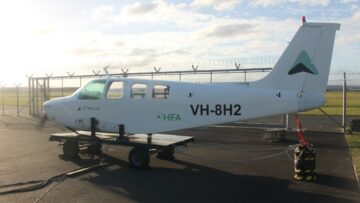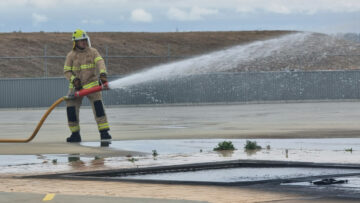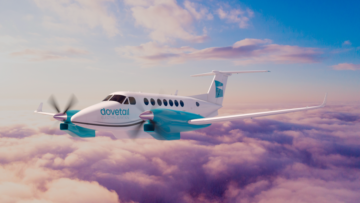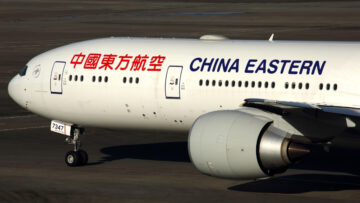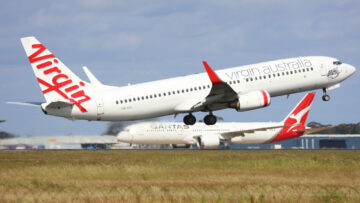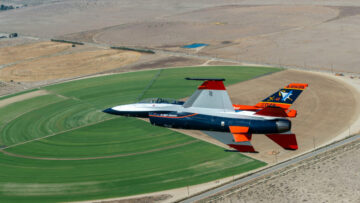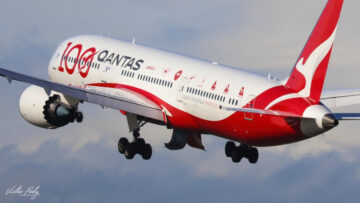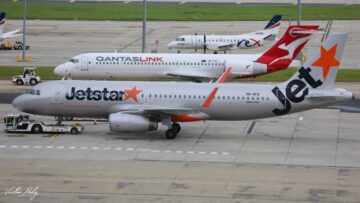
Just 6,000 more domestic passengers passed through Melbourne Airport in June compared to the same month last year, presenting yet more evidence of the sector’s stagnating recovery.
The increase, so small as to not register as 1 per cent, means domestic travel in Victoria’s biggest airport is now stuck at 94 per cent of 2019 levels.
It follows a similar situation in Sydney, which led to its CEO telling big airlines to use their take-off slots or gift them to smaller carriers to increase competition.
In total, Melbourne Airport handled 19,038 passenger and cargo flight movements in June, surpassing the corresponding 2019 monthly figure for the first time.
However, the 1,848,712 domestic travellers recorded was barely any more than the 1,842,335 seen last year and significantly down on 2019’s figure of 1,963,625.
The disappointing recovery for domestic compares with a better-than-expected bounce back in international travel, where school holidays boosted global travel to 825,480 passengers in June – 91 per cent of pre-pandemic 2019.
Melbourne Airport CEO Lorie Argus said, “We have worked very hard alongside the Victorian State Government to ensure Melbourne is front of mind for airlines as they return aircraft to service and add new planes to their fleet.
“Some of the world’s biggest airlines, such as United Airlines, Qatar Airways and Singapore Airlines, are now flying more seats into Melbourne than they were before the pandemic.
PROMOTED CONTENT
“Capacity to key markets such as India and Vietnam is also much higher than in 2019, which means more options for passengers and local exporters, all of which is good news for Victoria’s economy.”
Melbourne’s numbers come after Sydney revealed this week that its domestic passenger numbers grew 1.2 per cent year-on-year in June.
Overall, its domestic recovery is at just 90.6 per cent of the numbers seen pre-pandemic.
CEO Geoff Culbert blamed steep airfares and “high cancellation rates on popular domestic routes” for suppressing passenger demand.
“In the 12 months to June, passenger numbers on the Sydney to Melbourne route were just 81 per cent recovered compared to pre-pandemic levels, while numbers between Sydney and Canberra were only 64 per cent recovered,” he said.
“It will be interesting to see if this is a long-term trend. If incumbent airlines have decided to fly less between key domestic markets, then they should relinquish slots to domestic and international carriers who want to operate out of Sydney Airport and provide more choice for customers.”
The poor figures tie into the ongoing controversy around airport take-off slots after the ACCC in June argued that larger airlines “can exploit” the rules around their allocation to stifle competition from smaller carriers.
A slot is a literal time slot that allows an airline to take off at a specific airport at a particular time.
Australia’s current system for allocating them attempts to shield airlines from having to unexpectedly cancel flights as well as increasing competition domestically, ensuring no one operator holds a monopoly over the best times.
Currently, an airline can hold a timeslot at an airport indefinitely as long as it flies it 80 per cent of the time, allowing carriers to cancel up to a fifth of flights and keep the time.
It has led to accusations from critics that airlines take slots they do not actually need as there is a huge buffer to cancel so many of them, forever blocking out rivals. Both Qantas and Virgin Australia, though, have strongly denied they are gaming the slot system.
- SEO Powered Content & PR Distribution. Get Amplified Today.
- PlatoData.Network Vertical Generative Ai. Empower Yourself. Access Here.
- PlatoAiStream. Web3 Intelligence. Knowledge Amplified. Access Here.
- PlatoESG. Automotive / EVs, Carbon, CleanTech, Energy, Environment, Solar, Waste Management. Access Here.
- BlockOffsets. Modernizing Environmental Offset Ownership. Access Here.
- Source: https://australianaviation.com.au/2023/07/melbourne-airports-domestic-numbers-dont-grow-in-june/
- :has
- :is
- :not
- :where
- $UP
- 000
- 1
- 12
- 12 months
- 19
- 2019
- 80
- 90
- 91
- a
- Accusations
- actually
- add
- After
- aircraft
- airline
- Airlines
- airport
- airways
- All
- allocation
- Allowing
- allows
- alongside
- also
- an
- and
- any
- ARE
- argued
- around
- AS
- At
- Attempts
- back
- BE
- before
- BEST
- between
- Big
- Biggest
- blocking
- Boosted
- both
- Bounce
- buffer
- CAN
- Cargo
- carriers
- ceo
- choice
- COM
- come
- compared
- competition
- controversy
- Corresponding
- Critics
- Current
- Customers
- decided
- Demand
- denied
- disappointing
- do
- Domestic
- domestically
- down
- economy
- ensure
- ensuring
- evidence
- fifth
- Figure
- Figures
- First
- first time
- FLEET
- flight
- Flights
- flying
- follows
- For
- forever
- from
- front
- gaming
- gift
- Global
- good
- Government
- handled
- Hard
- Have
- having
- he
- higher
- hold
- holds
- holidays
- HTTPS
- huge
- if
- in
- Increase
- increasing
- Incumbent
- india
- interesting
- International
- into
- IT
- ITS
- jpg
- june
- just
- Keep
- Key
- larger
- Last
- Last Year
- Led
- less
- levels
- local
- Long
- long-term
- many
- Markets
- means
- Melbourne
- mind
- Month
- monthly
- months
- more
- movements
- much
- Need
- New
- news
- no
- now
- numbers
- of
- off
- on
- ONE
- ongoing
- only
- operate
- operator
- Options
- or
- out
- over
- pandemic
- particular
- passed
- per
- Planes
- plato
- Plato Data Intelligence
- PlatoData
- poor
- Popular
- provide
- Qatar
- Rates
- recorded
- recovery
- register
- remain
- return
- Revealed
- rivals
- Route
- Said
- same
- School
- see
- seen
- service
- Shield
- should
- significantly
- similar
- Singapore
- situation
- slot
- slots
- small
- smaller
- So
- specific
- stagnating
- State
- stifle
- strongly
- such
- suppressing
- sydney
- system
- Take
- than
- that
- The
- their
- Them
- then
- There.
- they
- this
- this week
- though?
- Through
- TIE
- time
- times
- to
- Total
- travel
- Trend
- United
- united airlines
- use
- very
- Vietnam
- want
- was
- week
- WELL
- were
- which
- while
- WHO
- will
- with
- worked
- world’s
- year
- yet
- zephyrnet

